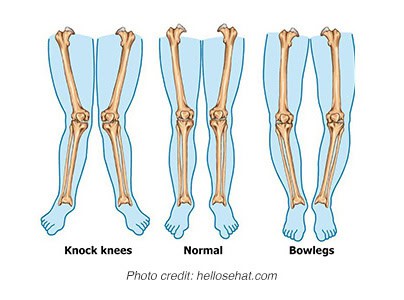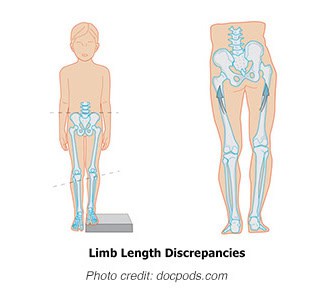Photo credit: depuysynthes.com
Limb deformity is an abnormality in the shape of the limb. Deformities can happen in upper limbs or lower limbs. Arms or legs can appear bent, rotated or shortened. Joints, commonly knees and ankles, can also be deformed or bent. Among the common deformities are bowlegs, knock knees, limb length discrepancies and other conditions. One may be born with deformities (congenital) or acquire it as a result of an injury, accident, tumour or infection.


Deformities can disturb our functions, causing disability. It can affect our appearance and cause cosmetic disturbances. At times, we are unable to perform routine chores or our activity of daily living due to deformities. Deformity involving lower limbs/ legs are more prominent since it affects our walking pattern. A person with lower limb deformity walks with an abnormal gait and a limp especially if there is shortening. This often leads to pain over the bones or joints. Some deformities may worsen over years, making the limbs or joints appear more bent and causing more disability. If limb deformities are left untreated, they may lead to long-term complications. Complications such as chronic back pain, early osteoarthritis of nearby joints and chronic pain are among the possible long term effects of untreated limb deformities.
Those with deformity can benefit from treatment. Treatment depends on the type and severity of deformity as well as the age of the person. In some cases, the limb deformity corrects naturally especially in children. However, some deformities can persist or the abnormality becomes more severe.
Treatment can consist from simple braces and exercises or even shoe raise if the deformity is mild or the limb length discrepancy is minimal. However, in more prominent deformities, surgical correction is needed. Short limb with significant limb length discrepancy requires limb lengthening. In a patient with deformity, a thorough examination with measurements is done by the surgeon. Necessary imaging including X-rays will be done before any treatment or surgery is done.
Corrective surgery generally involves using either internal implants such as plates and nails or external implants. With proper planning and surgery, most deformities and shortening can be corrected. Arms or legs can be realigned. Deformed joints can be straightened. Limb length discrepancies are corrected by lengthening the affected bone to achieve near normal limb. As a result, patients improve in cosmetic appearance, function and gait. This also reduces the incidents of possible long-term complications.
Share:
Was this article helpful?
Share:
Was this article helpful?
Health Packages
Elevate your health with tailored health packages at Columbia Asia Hospital. Take charge of your health journey today.
Pink October 2024
From
RM80
Columbia Asia 30th Anniversary Promotion “Maternity & Baby”
AIA Policyholders Self-pay Benefits
12.12 CheckJer Health Package
RM140
Find Out MoreHLA Policyholders Promo: Influenza Vaccination
RM65
Find Out MorePink October 2025
From
RM80

